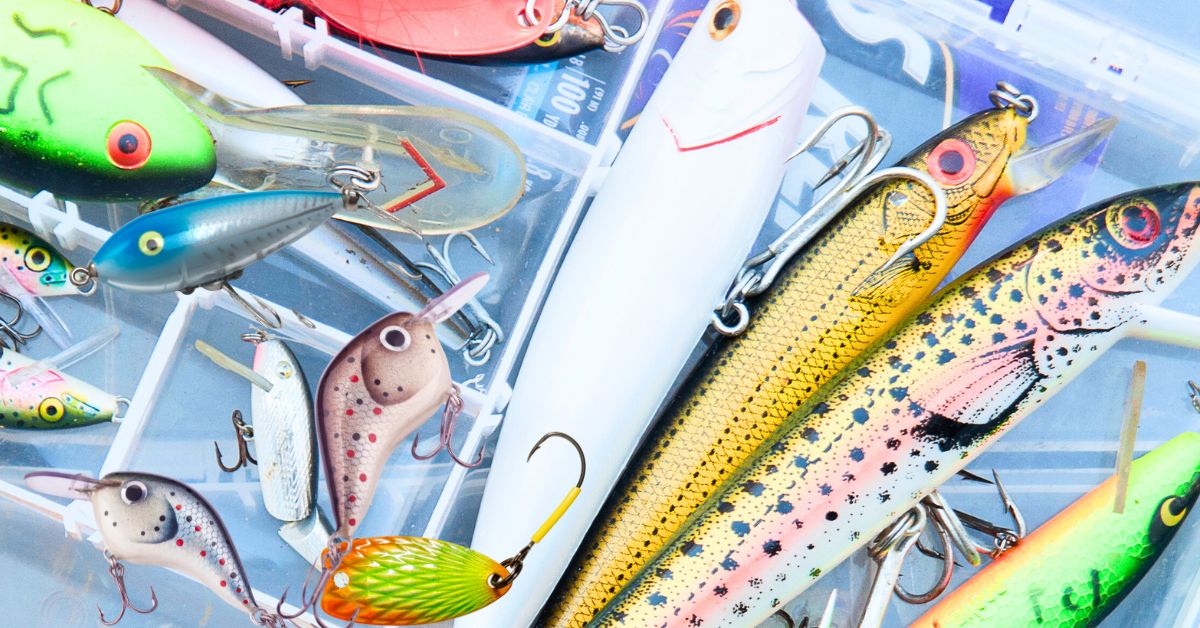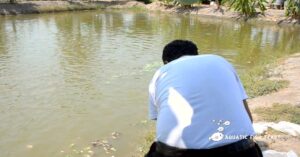Do you want to know what lures to use for trout? Yes, I want to know what lures work for trout. Spinners, jerk baits, fly fishing flies, beads, and live bait are good trout lures. This post will continue with the best trout lures.
Your option of using trout fishing lures might differ based on the unique trout species. If you need to learn this, it can become exhausting and a waste of time and money.
However, my many years of experience using trout to lure fish show that I know the do’s and do n’ts. So, let me show you what lures to use for trout.
Let us get started!
Table of Contents
Best Trout Fishing Lures
Choosing lures for trout is a combination of experience and other factors.
However, my experience of using different types of the best lures for trout will help me show you the best type of trout to lure fish easily in your fishing adventure with trout lures.
All my life, I have been within the aquatic environment. When I am less busy with other work, I enjoy going fishing with my husband and son, testing out various best ways to attract fish with different baits.
I remember the occasion when I first experienced trout fishing lures.
As usual, we have always heard a beautiful day when the sun goes below the horizon, casting a fiery orange glow over the tranquil mountain lake; my husband prepared for a night of trout fishing.
He felt an electrifying sense of anticipation when getting ready with different of the best trout fishing lures.
His evening began with the subtle and mesmerizing dance of a spinner. As he cast it out into the glassy water, the blade spun and reflected the fading daylight, creating an irresistible illusion of a small, panicked fish.
With a swift strike from the depths, a rainbow trout leaped from the water, shimmering with all the colors of the setting sun.
Next, we decided to test the waters with a classic spoon lure and an effective trout lure too. He selected a gold one with red accents that had served him well.
With each retrieval, the spoon fluttered enticingly, mimicking the movements of a wounded minnow.
A brown trout lurking in the deeper pools couldn’t resist and lunged, creating a fierce battle that sent ripples across the lake’s surface.
What type of Color Lures To Use On Cloudy Days For Trout
Colors are significant when trying to attract fish to the trout. On cloudy days, darker and more contrasting lure colors are often more effective for trout fishing. Colors such as black, brown, and dark green.
You can also combine dark hues with bright accents to make them more effective in low-light conditions, as they improve visibility and stand out against an overcast sky.
Colors in fishing lures are important because they can influence a fish’s response and boost the likelihood of a successful catch. Fish frequently rely on visual clues to detect prey, and the correct hue can look like their natural food sources.
Bright and contrasting colors can attract fish in various water conditions, although subtler or more realistic colors may be more successful in clearer waters.
Understanding target species’ color preferences and modifying lure colors accordingly improve the angler’s ability to elicit bites and overall fishing success.
Exploring The Different Trout Testing
Eager to explore the depths, my husband switched to a crankbait, choosing a lifelike shad rap in a vibrant perch pattern.
The lure’s deep-diving action allowed him to explore new territory, and soon, a trophy-sized brook trout couldn’t resist its allure. It struck with such force that the reel screamed as my son skillfully played the fish.
When the night settled in, and the moonlit waters cast an eerie glow, we turned to his trusty soft plastic bait. Rigged weightless, it drifted gently along the water’s surface, imitating a helpless insect.
A hungry cutthroat trout in the shallows couldn’t resist the temptation, and an insignificant pull on the line turned into a fierce brawl.
As the night wore on, My son tried his luck with some vividly colored beads, working them with a meticulous rhythm.
This time, a brooding lake trout rose from the depths, its massive form silhouetted against the pale moon.
The battle was epic, as the brute strength of the lake trout pushed Mark’s skills and gear to the limit.
In the early morning hours, we decided to try our luck with live bait—a lively worm threaded onto a hook.
When it hit the water’s surface, a voracious brown trout sprang out from the depths and struck with rage.
My son’s adrenaline rose as he struggled to pull in the feisty fish, knowing he had just enjoyed an incredible night of trout fishing with various lures, each with its own story to tell.
We take our time once every week and spend the day experimenting with many materials, such as trout, to see which works best for us and have what we can hear from a real-life experience.
What Lures To Use For Rainbow Trout
Rainbow trout fishing is amazing, but choosing the right lure is crucial. Let’s explore rainbow trout lure selection’s challenges and peculiarities to improve your fishing experience.
Spinners are flexible and efficient rainbow trout lures, and they are also popular trout fishing lures. Small to medium-sized spinners in silver, gold, or rainbow trout designs might work well.
Spinners work, but their effectiveness is based on water clarity, trout behavior, and environmental circumstances.
Trouts may prefer a smaller spinner with subtle colors in clean, fast-moving streams, while in muddy waters, a larger, brighter spinner may entice them more.
Rainbow trout fishermen often use spoons because they move like wounded baitfish.
Choose smaller to medium-sized silver, gold, or dazzling spoons to attract strikes. Mixing steady returns with intermittent jerks can make spoons more appealing to hungry fish.
Inline spinners like the Blue Fox Vibrax and Mepps Aglia can captivate rainbow trout in streams and rivers.
However, understanding the fishing habitat is necessary for their efficiency. To succeed, monitor water depth, current speed, and trout behavior and alter your effort.
Consider crankbaits that resemble minnows or other baitfish to attract rainbow trout. Choose shallow-diving or floating crankbaits to prevent snagging fish in shallow or rocky locations.
It would help if you experimented with retrieve speed and depth to determine the best presentation to generate strikes in varied fishing situations.
Further on what lures to use for rainbow trout
Soft plastic baits for finesse are useful in slower-moving environments. Worms, minnows, and grubs on jig heads or drop shot rigs may be precisely presented to lure even the pickiest trout. It’s crucial to adjust to trout behavior and environmental changes.
PowerBait is popular for stocked trout in lakes and ponds, but fishermen must consider ethical and conservation issues.
Keeping trout populations healthy and aquatic habitats intact requires responsible PowerBait use—adhering to catch limits, selective harvest, and fishing laws.
Rainbow trout lure selection requires rigorous attention to detail and a deep grasp of the fishing environment.
By understanding lure selection and modifying your strategy, you may improve your odds of success and have great fishing experiences.
What Lures To Use For Lake Trout
Lake trout (Mackinaw or char) fishing requires the correct bait to maximize success.
Let’s explore lake trout lure choice, evaluate crucial elements, and give practical tips to improve your fishing experience:
1. Spoons with Flutter Action: Lake trout fishermen use spoons because they imitate damaged baitfish. Large spoons in silver, gold, or bright colors attract trophy lake trout.
Opportunistic lake trout might attack Doctor Spoon and Lake Clear Wabbler due to their efficient fluttering movement.
2. Flexible Jigs: Jigs are adaptable lake trout lures that work at varied depths. Heavy jigs (0.5-2 ounces) are good for reaching lake trout in deeper water.
Add soft plastic trailers, live bait like minnows, or cut bait to jigs to attract wary lake trout.
3. Trolling Lures for Coverage: Trolling is a common way to find active lake trout across broad regions. Rapala’s Deep Tail Dancer and Reef Runner Deep Diver are good deep-diving plugs for lake trout trolling.
Trolling depth may be adjusted using diving planers or downriggers to target lake trout at different depths.
4. Realistic Swimbaits: Large, soft plastic swimbaits can attract huge lake trout in waters with many baitfish.
Choose swimbaits with realistic swimming movements and local forage-like hues. Retrieve them at different speeds to mimic wounded prey and attract aggressive lake trout.
5. Precision Tube Jigs: Tube jigs are another good lake trout lure in shallower waters or near rocky features or drop-offs—rig tube jigs on lead-head jigs of the right weight to achieve the required depth.
You can try different colors and sizes to match the hatch and attract lake trout.
6. Moral Issues: Selecting lake trout lures requires ethical and conservation concerns. Live bait can work, but fishermen should consider fish mortality and environmental impact.
Catch-and-release and fishing restrictions help preserve lake trout populations for future fishermen.
Anglers may increase their chances of catching trophy lake trout and have great fishing trips by carefully considering lure selection, presentation, and ethics.
My Final Thought
You have learned from this article what lures to use for trout and the complete top trout lure recommendations.
But, when you are selecting lures for trout, it is vital to consider the water conditions, the trout species you’re targeting, and the local regulations.
I have always advocated that your best answer to fishing experience is the one you get when you experiment yourself.
With this article’s trout lure selection guide, you may try several lures and methods to see what works best in your fishing location.
Remember that season, time of day, and water temperature affect trout behavior and lure success.
Other Articles:




